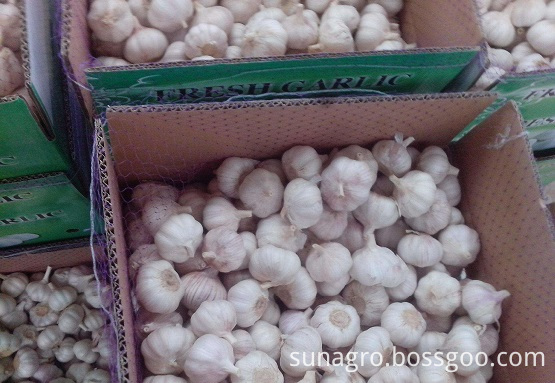Quality of White Garlic in our company:
Root cut Garlic clean clean, loose skin peeling garlic, no cooking garlic, no black moldy garlic, no broken garlic, skin no lobes, no internal sprouting, no insects or fungi.
Garlic belongs to liliaceae allium I and ii plants, which are composed of roots, stems, leaves, moss, bulbs, flowers and other parts. The roots are string-like root system, and the root group is mainly distributed in the soil layer of 0 ~ 30 cm. The stems of garlic degrade into flat short shriveled stems, called stem disk, and form bulbs with leaf sheath and garlic clove, namely the head of garlic.We can pack 10KG and 20KG boxes as required by the customer. If you have any need, please let us know.

Garlic In Cartons,Garlic Cartons Packaging,Fresh Garlic In Cartons,White Garlic In Cartons
Jining Sunagro Trade Co., Ltd. , http://www.sunagro-food.com